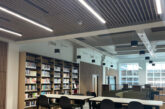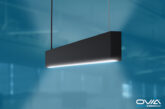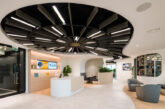
Vice President of Global Marketing and Business Development for Fulham Russ Sharer talks about how LED lighting has revolutionised the industry.
LEDs have revolutionised the lighting industry, enabling long-lasting, low-power illumination.
LEDs can be used in anything from traditional troffers to abstract luminaire shapes. You can also tune the light to just the right colour.
However, along with the diversity of LEDs for lighting applications come fresh headaches for installation and maintenance.
Many of the early LED luminaires are starting to reach the end of their useful life, which means replacing components, especially power supplies.
How are you going to stock all the replacement power supplies you need for such a wide variety of luminaires?
And, even when the replacements are installed, how can you be sure the lumen output will match the other installed fixtures, especially at different dimming levels?
The answer is programmable drivers that allow you to match operational characteristics by adjusting them in the field.
The LED drivers control light qualities
Just as fluorescent and HID lights use a ballast, LED luminaires use an LED driver to convert voltage from mains to DC power.
Drivers also isolate the luminaires from high voltage to mitigate shock hazards and counter line-voltage fluctuations that could damage the LEDs.
The LED drivers are designed to deliver either a constant current or a constant voltage directly to the LED light source, depending on the LED module and its applications. This eliminates the need for on-board current regulators and improves overall efficiency.
Typical constant-current drivers are available in 350mA to 1050mA output, with some products ranging up to 2400mA.
When constant-current drivers became the standard for LED lighting, luminaire makers started to design drivers for optimal light and light shaping.
The result is a growing variety of lighting types and drivers, so when a luminaire power supply fails, you have to match all the characteristics of the driver to get the right lighting attributes.
This includes output current and voltage; otherwise, you get a different lumen output.
With programmable drivers, however, you have one unit that can be adapted for all applications.
You can also tune the driver over time to reduce output current as LEDs become more efficient and require less power.
More importantly, upon installation, you can tune the replacement driver to match the dimming profile of the other luminaires in the room.
This eliminates hot spots at full power or premature darkness at lower dimming levels.
However, in order to match the installed luminaires, you have to be able to program the LED driver on site. Multiple trips to program and match the luminaires are costly and a waste of time.
What installers need in a programmable LED driver
The concept behind having a programmable LED driver is to be able to adjust lighting as needed, whether it is upon installation or to adjust at some later date.
To gain maximum flexibility and longevity, you want a high-quality product with specific features that make it suitable for custom programming the field.
Programmable LED drivers promise to offer more versatility, not only for lighting retrofits, but for other applications as well.
For example, programmable wireless communications installed in the drivers will simplify installation and the ability to remotely adjust lighting quality.
This is as well as giving you the means to monitor luminaires remotely to assess performance and monitor for failure.
You can expect programmable LED drivers to continue to evolve, providing a power tool that will facilitate installing LED retrofits and make it easier to install and tune new light fixtures.
For more information, visit: www.fulham.com.










